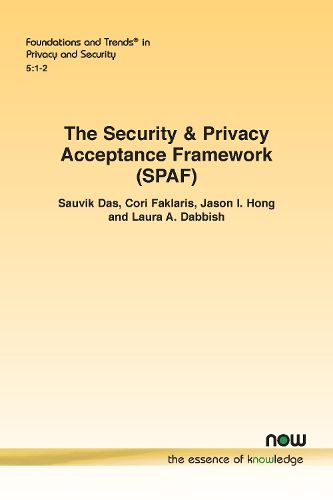Readings Newsletter
Become a Readings Member to make your shopping experience even easier.
Sign in or sign up for free!
You’re not far away from qualifying for FREE standard shipping within Australia
You’ve qualified for FREE standard shipping within Australia
The cart is loading…






This title is printed to order. This book may have been self-published. If so, we cannot guarantee the quality of the content. In the main most books will have gone through the editing process however some may not. We therefore suggest that you be aware of this before ordering this book. If in doubt check either the author or publisher’s details as we are unable to accept any returns unless they are faulty. Please contact us if you have any questions.
Cybersecurity and Privacy (S&P) unlock the full potential of computing. Use of encryption, authentication, and access control, for example, allows employees to correspond with professional colleagues via email with reduced fear of leaking confidential data to competitors or cybercriminals. It also allows, for example, parents to share photos of children with remote loved ones over the Internet with reduced fear of this data reaching the hands of unknown strangers, and anonymous whistleblowers to share information about problematic practices in the workplace with reduced fear of being outed. Conversely, failure to employ appropriate S&P measures can leave people and organizations vulnerable to a broad range of threats. In short, the security and privacy decisions we make on a day-to-day basis determine whether the data we share, manipulate, and store online is protected from theft, surveillance, and exploitation.
How can end-users be encouraged to accept recommended S&P behavior from experts? In this monograph, prior art in human-centered S&P is reviewed, and three barriers to end-user acceptance of expert recommendations have been identified. These three barriers make up what we call the "Security & Privacy Acceptance Framework" (SPAF). The barriers are: (1) awareness: i.e., people may not know of relevant security threats and appropriate mitigation measures; (2) motivation: i.e., people may be unwilling to enact S&P behaviors because, e.g., the perceived costs are too high; (3) and, ability: i.e., people may not know when, why, and how to effectively implement S&P behaviors.
This monograph also reviews and critically analyzes prior work that has explored mitigating one or more of the barriers that make up the SPAF. Finally, using the SPAF as a lens, discussed is how the human-centered S&P community might re-orient to encourage widespread end-user acceptance of pro-S&P behaviors by employing integrative approaches that address each one of the awareness, motivation, and ability barriers.
$9.00 standard shipping within Australia
FREE standard shipping within Australia for orders over $100.00
Express & International shipping calculated at checkout
This title is printed to order. This book may have been self-published. If so, we cannot guarantee the quality of the content. In the main most books will have gone through the editing process however some may not. We therefore suggest that you be aware of this before ordering this book. If in doubt check either the author or publisher’s details as we are unable to accept any returns unless they are faulty. Please contact us if you have any questions.
Cybersecurity and Privacy (S&P) unlock the full potential of computing. Use of encryption, authentication, and access control, for example, allows employees to correspond with professional colleagues via email with reduced fear of leaking confidential data to competitors or cybercriminals. It also allows, for example, parents to share photos of children with remote loved ones over the Internet with reduced fear of this data reaching the hands of unknown strangers, and anonymous whistleblowers to share information about problematic practices in the workplace with reduced fear of being outed. Conversely, failure to employ appropriate S&P measures can leave people and organizations vulnerable to a broad range of threats. In short, the security and privacy decisions we make on a day-to-day basis determine whether the data we share, manipulate, and store online is protected from theft, surveillance, and exploitation.
How can end-users be encouraged to accept recommended S&P behavior from experts? In this monograph, prior art in human-centered S&P is reviewed, and three barriers to end-user acceptance of expert recommendations have been identified. These three barriers make up what we call the "Security & Privacy Acceptance Framework" (SPAF). The barriers are: (1) awareness: i.e., people may not know of relevant security threats and appropriate mitigation measures; (2) motivation: i.e., people may be unwilling to enact S&P behaviors because, e.g., the perceived costs are too high; (3) and, ability: i.e., people may not know when, why, and how to effectively implement S&P behaviors.
This monograph also reviews and critically analyzes prior work that has explored mitigating one or more of the barriers that make up the SPAF. Finally, using the SPAF as a lens, discussed is how the human-centered S&P community might re-orient to encourage widespread end-user acceptance of pro-S&P behaviors by employing integrative approaches that address each one of the awareness, motivation, and ability barriers.